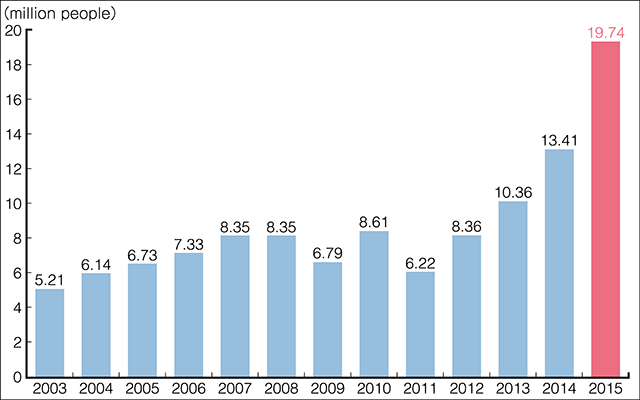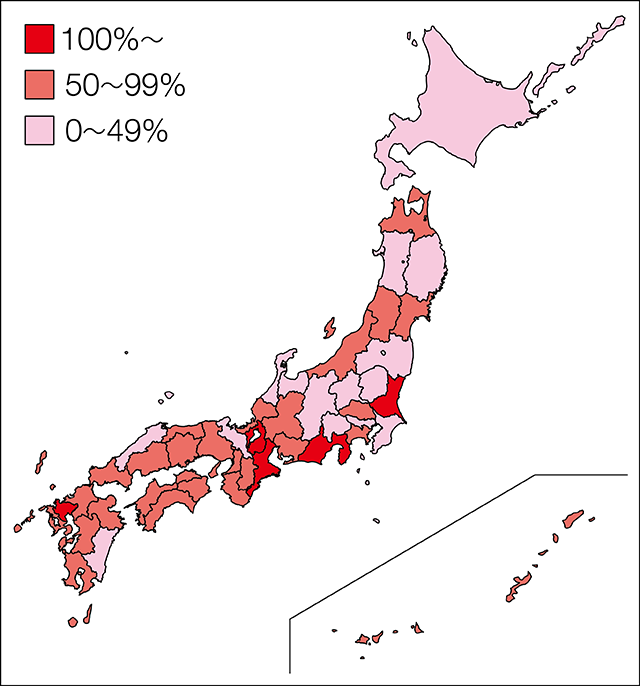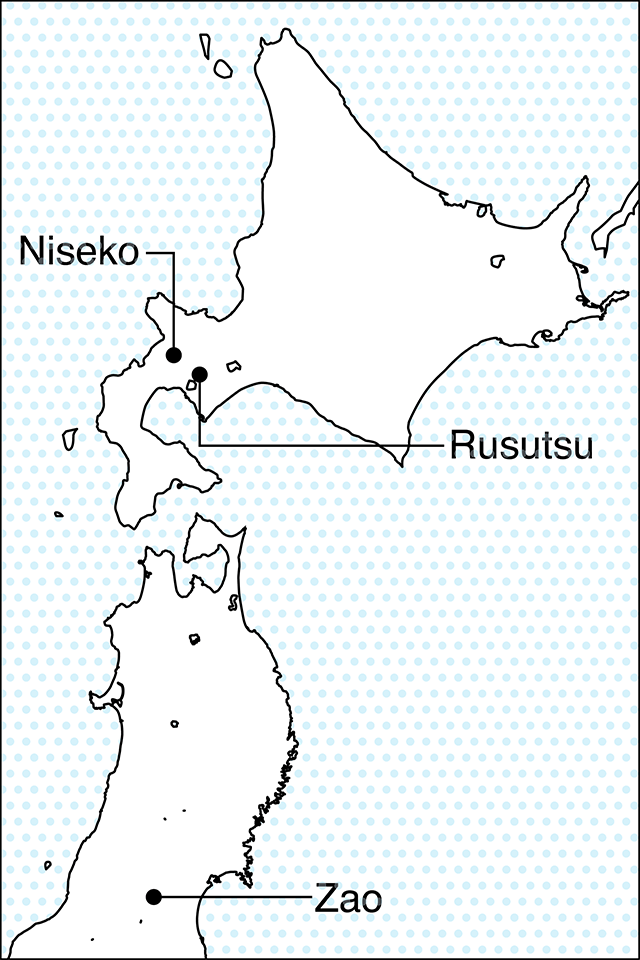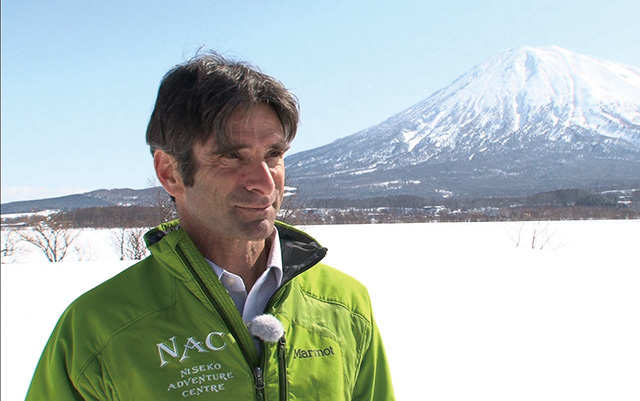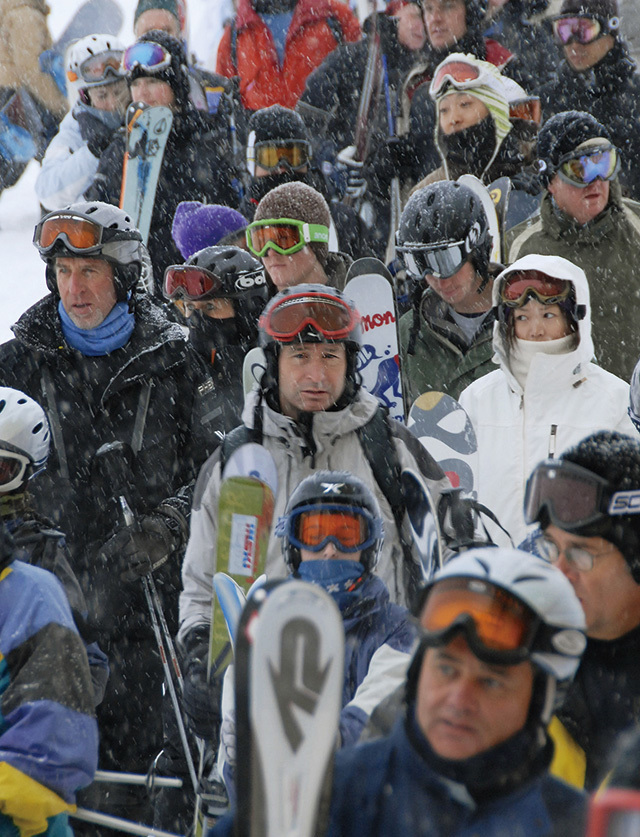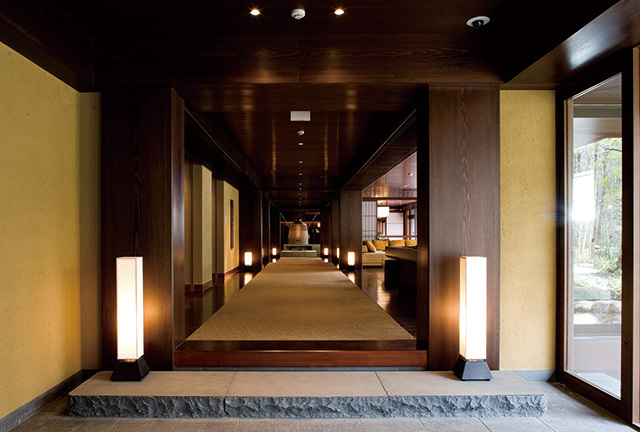Number of foreign visitors to Japan
Source: Japan National Tourism Organization (JNTO)
Year-on-year increase in total number of nights spent by foreign visitors at tourist accommodation
The number of tourists visiting Japan has been rapidly increasing. In 2015 inbound tourists totaled 19.74 million, double the figure for 2013. A number of factors are seen as contributing to this growth, such as the depreciation of the yen, relaxation of visa requirements, and increased affluence in neighboring countries. The trend seems likely to continue.
The Japan Tourism Agency recently released data showing that the increase in the number of tourists is spreading to regions around the country. This offers evidence of growing awareness among visitors from abroad that Japan’s attractions are not limited to the sights along the popular Tokyo–Mount Fuji–Kyoto “Golden Route.” It indicates that regional tourism is a new market with great room for future development.
Let us introduce one case of a region that has successfully tapped its tourism resources to attract foreign visitors. The ski resorts of Hokkaido, notably Niseko and Rusutsu, have long been favorite destinations for Japanese skiers attracted by their high-quality powder snow, but now the area is also drawing growing numbers of foreign visitors as well, including Southeast Asian tourists, for whom snow is an unusual sight, and skiers from Australia, where the seasons are the reverse of Japan’s. Ross Findlay, an Australian who fell in love with Hokkaido, has been actively involved in developing the town of Niseko as a resort. He worked with locals eager to promote their town as a tourist destination, creating a hospitality setup to accommodate non-Japanese guests. As a result Niseko has become a resort that is highly popular among foreign visitors. Findlay says his next goal is to get out the word about Niseko’s attractions as a summer resort. He believes that many other places in Japan have similar potential for development as international tourist destinations.
International involvement is also seen in cases where foreign companies have acquired and revived traditional Japanese inns, ryokan , that were ailing financially. One such ryokan is Chikusenso in Zao, Miyagi Prefecture, which was bought by Mingly, a Hong Kong–based corporation. Payson Cha, Mingly’s chairman, says he was confident that Chikusenso could be made more international, more efficient, and more modern as a hotel while maintaining its original values, culture, and environment. Japan’s regions have many undeveloped or underutilized tourism resources of this sort.
The development of inbound tourism is not just about special tangible resources. Martin Barrow, a Briton who has been cooperating with Japan’s tourism promotion campaign as a Visit Japan Ambassador, declares that visitors do not come to Japan just to see famous or historical sights; they look forward to experiencing the “real” Japan—the lives and everyday activities of people in the regions of the country. These typically Japanese aspects have untapped charm and latent potential to attract international visitors. And they can be found in close juxtaposition to city sights and tourist attractions, which means that tourists can combine experiencing these everyday aspects with visiting historical sites and enjoying the latest forms of recreation.
Japan’s local regions are definitely worth visiting. And if you discover the attractions of the lifestyles, history, and nature to be found in these places, perhaps you will consider investing in their development potential.






































































































